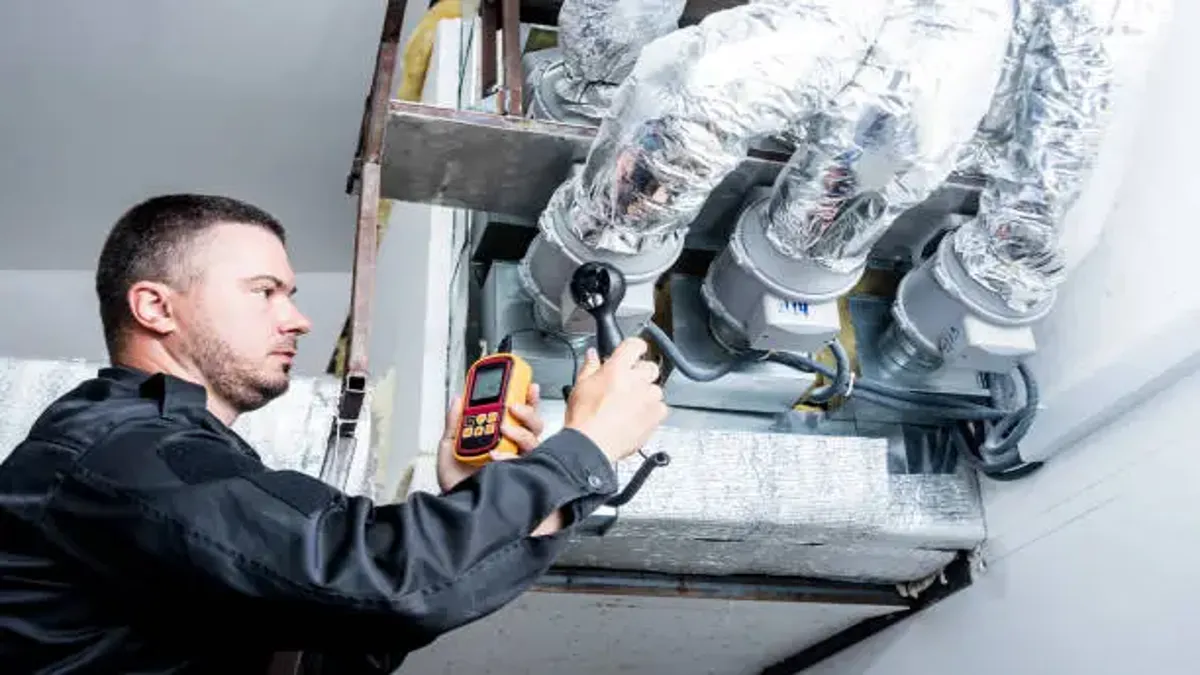Modern HVAC systems are complex, and even when they appear to be running, inefficiencies can silently drain energy, raise bills, and affect comfort. Many property owners only notice something is wrong when utility costs spike or airflow feels off. However, the issues behind inefficiencies aren’t always obvious. Subtle signs like short cycling, temperature inconsistencies, or excess humidity can point to deeper, interconnected system faults. HVAC professionals use a blend of diagnostic tools, hands-on assessments, and performance tests to uncover what’s reducing system performance. We will explore how these professionals methodically evaluate an HVAC system to identify hidden problems that can compromise comfort and efficiency.
Methods HVAC Professionals Use to Diagnose Inefficiencies
- Reviewing System History and Client Concerns
The diagnostic process begins with communication. HVAC professionals typically start by listening to the client’s concerns—whether it’s inconsistent temperatures, unusual noises, or unexplained energy spikes. They also review the system’s service records, including past repairs, maintenance routines, and equipment age. For those seeking Seattle HVAC repairs, this history becomes especially valuable in identifying issues influenced by local climate patterns or recurring usage habits. This background helps build a narrative around potential recurring issues. For example, repeated capacitor replacements might hint at an underlying issue with electrical components, while repeated thermostat problems may suggest wiring faults or incorrect placement.
Understanding usage patterns, like whether the system runs continuously or struggles during peak hours, can further narrow down root causes. This initial dialogue allows the professional to enter the site with context and develop an investigative plan tailored to the building’s layout, equipment type, and climate conditions. It’s a crucial first step before jumping into physical inspections or running tests, ensuring that the diagnostic process is purposeful rather than trial-and-error.
- Inspecting the Air Distribution System
Ductwork inefficiencies often go unnoticed but can significantly undermine HVAC performance. Professionals physically inspect air ducts for visible damage, disconnections, or signs of improper sealing. Leaky ducts may cause up to 30% of air loss, particularly in unconditioned spaces like attics or crawlspaces. Even if the equipment is functioning properly, this air loss leads to uneven room temperatures and wasted energy. HVAC technicians use smoke pencils, pressure sensors, or thermal imaging to detect subtle leaks or insulation failures in the duct network.
In addition, they check airflow at registers using anemometers to ensure consistent delivery of conditioned air across all rooms. They may also measure static pressure across the system, which reveals whether air is being choked by clogs, blockages, or poor duct design. Through this process, issues like crushed ducts, undersized returns, or improper balancing can be identified and addressed. A functioning system still loses efficiency if air distribution is compromised, making ductwork inspection a critical diagnostic step.
- Evaluating Refrigerant Levels and Heat Exchange Performance
One of the most technical and sensitive parts of HVAC diagnosis involves the refrigerant circuit. Professionals gauge refrigerant levels to ensure they match manufacturer specifications. Both undercharging and overcharging can reduce cooling capacity, raise energy consumption, and strain compressors. Using pressure gauges and superheat/subcool measurements, technicians assess whether the refrigerant cycle is functioning efficiently. They also examine the evaporator and condenser coils for dirt, corrosion, or restricted airflow. When coils are dirty or blocked, heat exchange becomes inefficient, making the system work harder to achieve the same temperature. This not only affects comfort but leads to higher energy bills and premature equipment wear.
Professionals may clean the coils and retest performance, measuring temperature differential across the coil to determine improvement. These measurements help isolate problems that aren’t visible to the eye but significantly affect the system’s ability to regulate indoor temperature efficiently. A properly charged and clean refrigerant circuit is vital to optimal HVAC performance.
- Analyzing Electrical Components and Control Systems
Electrical issues often fly under the radar until something fails outright, but small inefficiencies in control systems can contribute to performance issues. Professionals use multimeters to test voltage and current across capacitors, contactors, relays, and motors. They also examine wiring for corrosion, frays, or loose connections that may cause intermittent issues. More advanced diagnostics involve checking the thermostat’s calibration and location. If a thermostat is placed near a heat source or in direct sunlight, it may misread the room’s actual temperature and cause inefficient cycling.
Professionals also verify that the control board is properly regulating fan speeds, compressor stages, and other functions. They look for error codes stored in modern digital control panels, which can offer clues to intermittent issues like short cycling or communication failures between components. Electrical inefficiencies can be small but significant, and when left unchecked, they gradually erode the system’s performance and reliability.
HVAC inefficiencies can stem from multiple sources—mechanical, electrical, environmental, or user-driven—and often go unnoticed until energy bills climb or comfort drops. Diagnosing these issues requires more than a quick glance or a hunch. HVAC professionals follow a structured process that combines historical data, technical measurements, hands-on inspections, and environmental evaluations. Each step, from checking refrigerant levels to inspecting ductwork and analyzing control systems, contributes to building a complete picture of system health. Understanding how these diagnostic steps work empowers property owners to appreciate the value of regular checkups and to recognize that even a running system might not be running efficiently.

